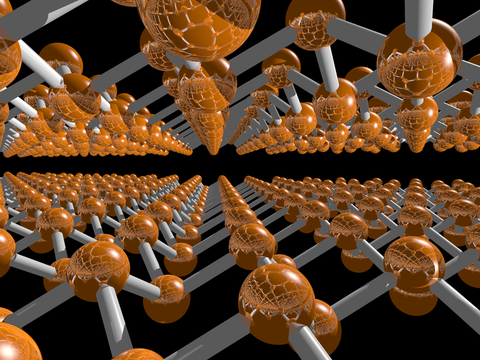Nov 09, 2020
Blue phosphorus: How a semiconductor becomes a metal

The international team modelled a two-layer buckled honeycomb structure of blue phosphorus by means of highly precise calculations on high-performance computers. The compound is very stable and due to the very small distance between the two layers, it has metallic properties.
Blue phosphorus, an atomically thin synthetic semiconductor, becomes metallic as soon as it is converted into a double layer. This has been discovered by an interdisciplinary team led by Prof Thomas Heine from TU Dresden and Prof Gabriel Merino from the Mexican research institute Cinvestav Merida. The scientists are first to describe the possibility of constructing nanoscale, highly efficient transistors consisting of only one element. The results of these investigations were published as highlight article in the current issue of the journal "Physical Review Letters".
For these promising results in basic research, first author Jessica Arcudia from Mexico has already been awarded the LatinXChem poster prize and the ACS Presidential Award. The young chemist was a guest student in the research group of Thomas Heine in 2018, where also her doctoral supervisor Prof Gabriel Merino had worked before.
Original publication:
Jessica Arcudia, Roman Kempt, Miguel Eduardo Cifuentes-Quintal, Thomas Heine, and Gabriel Merino. Blue phosphorene bilayer is a two-dimensional metal - and an unambiguous classification scheme for buckled hexagonal bilayers. Physical Review Letters.
DOI: https://doi.org/10.1103/PhysRevLett.125.196401
